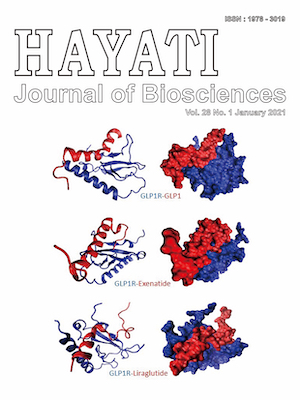Growth, Oxalate and Vitamin C Content of Red Amaranth (Amaranthus tricolor L.) Treated with Salicylic Acid
Abstract
Red amaranth (Amaranthus tricolor L.) contains phytochemicals that are important for human health, however it also contains oxalate that may cause uric acid problem in human health. This experiment was carried out to evaluate the effect of salicylic acid (SA) on growth, oxalate, chlorophyll, and vitamin C contents in red amaranth. Red amaranth seeds were germinated in a plastic pot containing a mixture of top soil and organic fertilizer. Three week-old seedlings were applied with SA of 0 M (control), 10-8, 10-6, 10-4 or 10-2 M. Five replicates were prepared for each treatment. Growth parameters observed were plant height, fresh weight, and dry weight of plant. The Ca-oxalate crystals density was determined by observing stem section under the microscope. Chlorophyll and oxalic acid content were determined by spectrophotometer method, whereas vitamin C content was determined by titration method. The results showed that plant height and root length were tend to decline by SA application, however SA of 10-6 M significantly increased chlorophyll, carotenoid and vitamin C content. All concentrations of SA applied were able to reduce oxalic acid content and Ca-oxalate crystal’s density in stem. It can be inferred that application of SA generally enhances nutrient quality of red amaranth.
Downloads
HAYATI J Biosci is an open access journal and the article's license is CC-BY-NC. This license lets others distribute, remix, tweak, and build upon author's work, as long as they credit the original creation. Authors retain copyright and grant the journal/publisher non exclusive publishing rights with the work simultaneously licensed under a https://creativecommons.org/


















.png) IPB University
IPB University Department of Biology
Department of Biology The Indonesian Biological Society
The Indonesian Biological Society 

